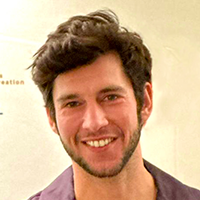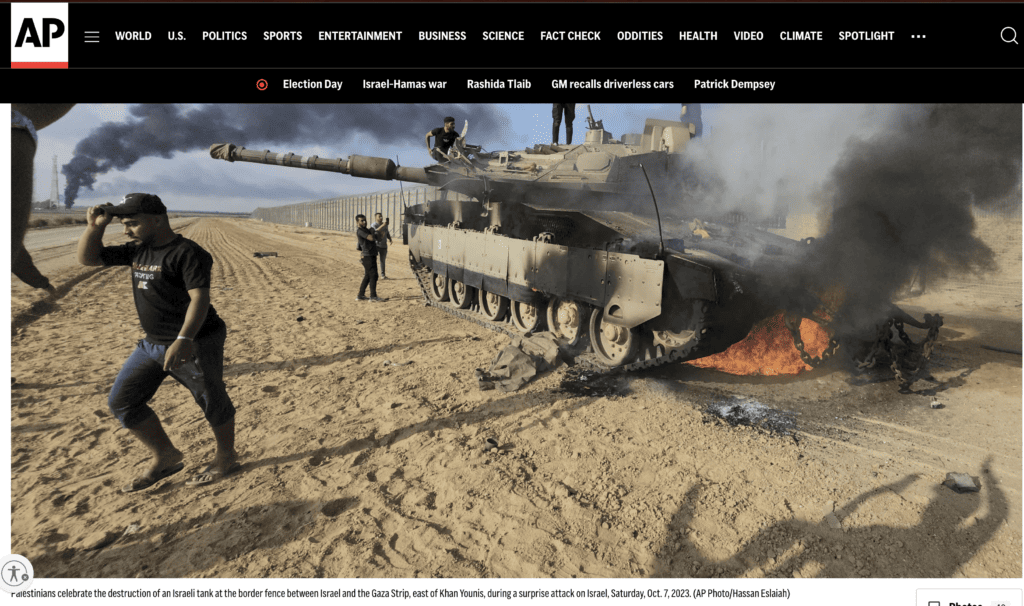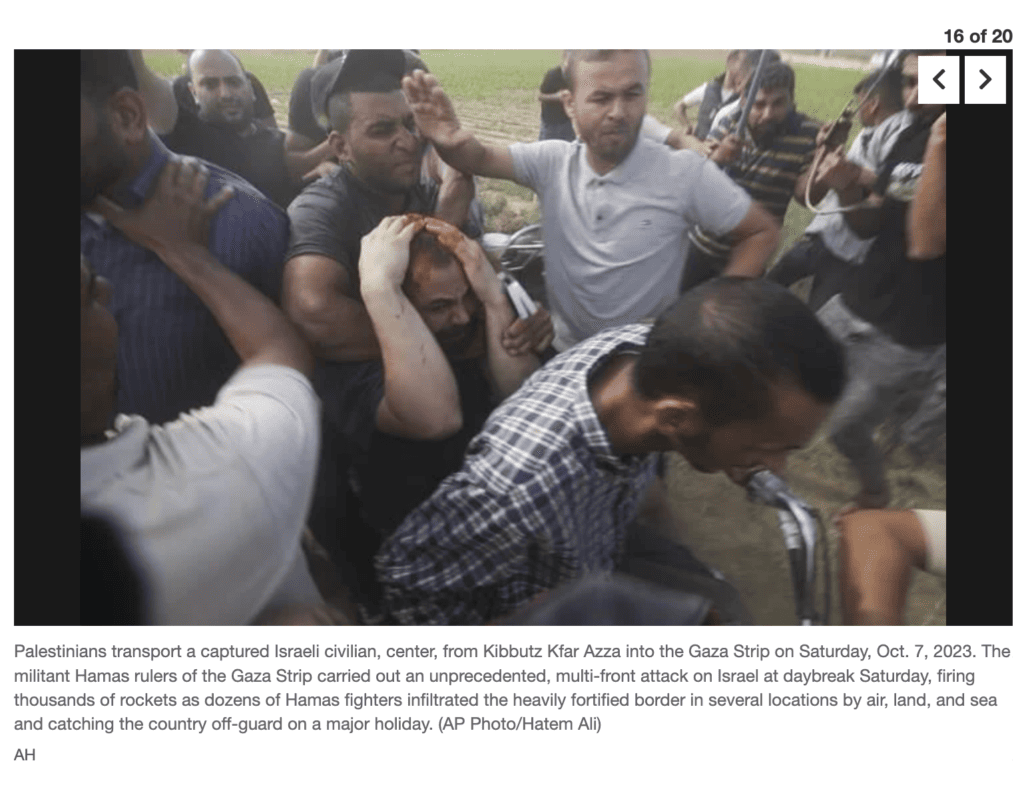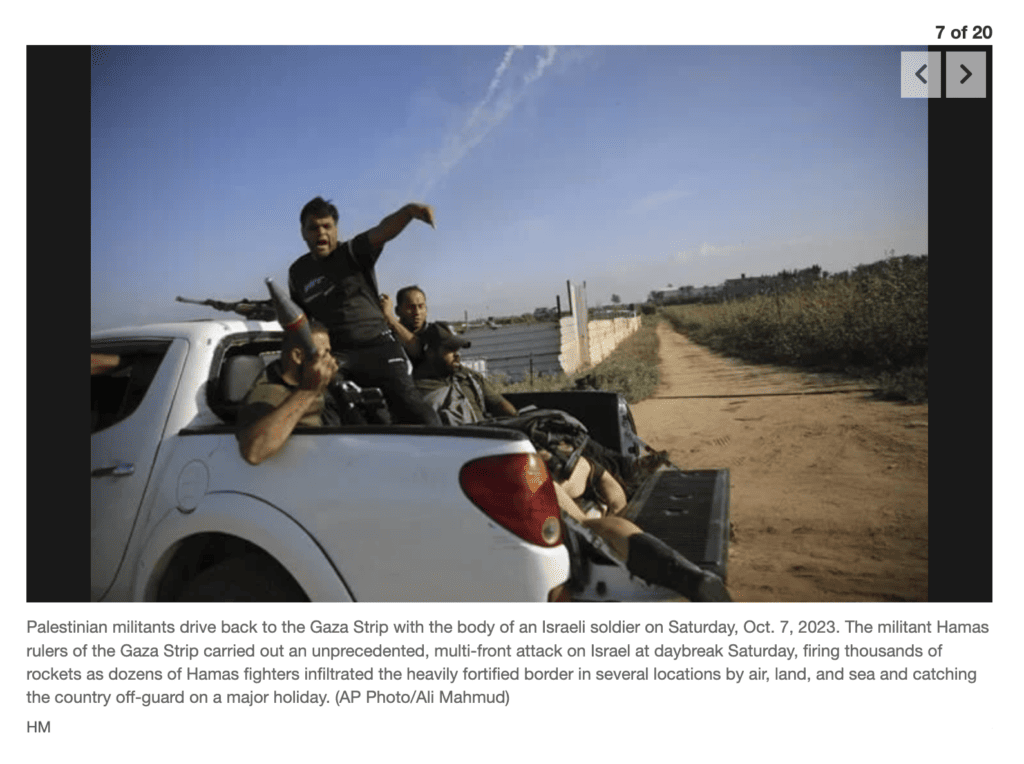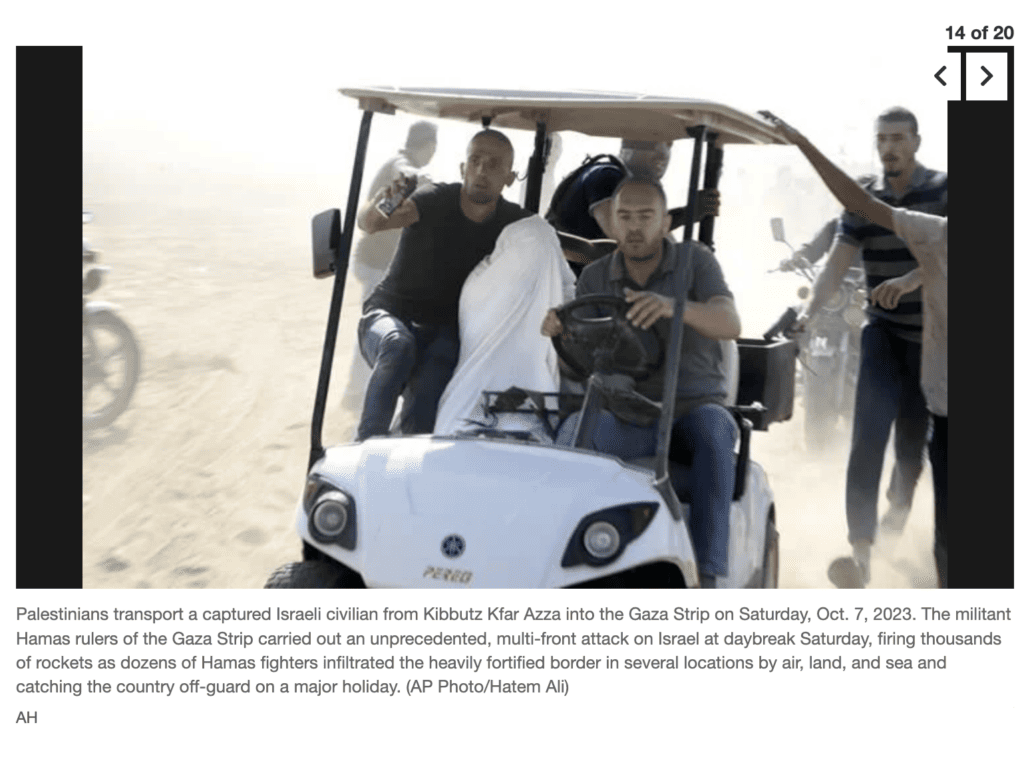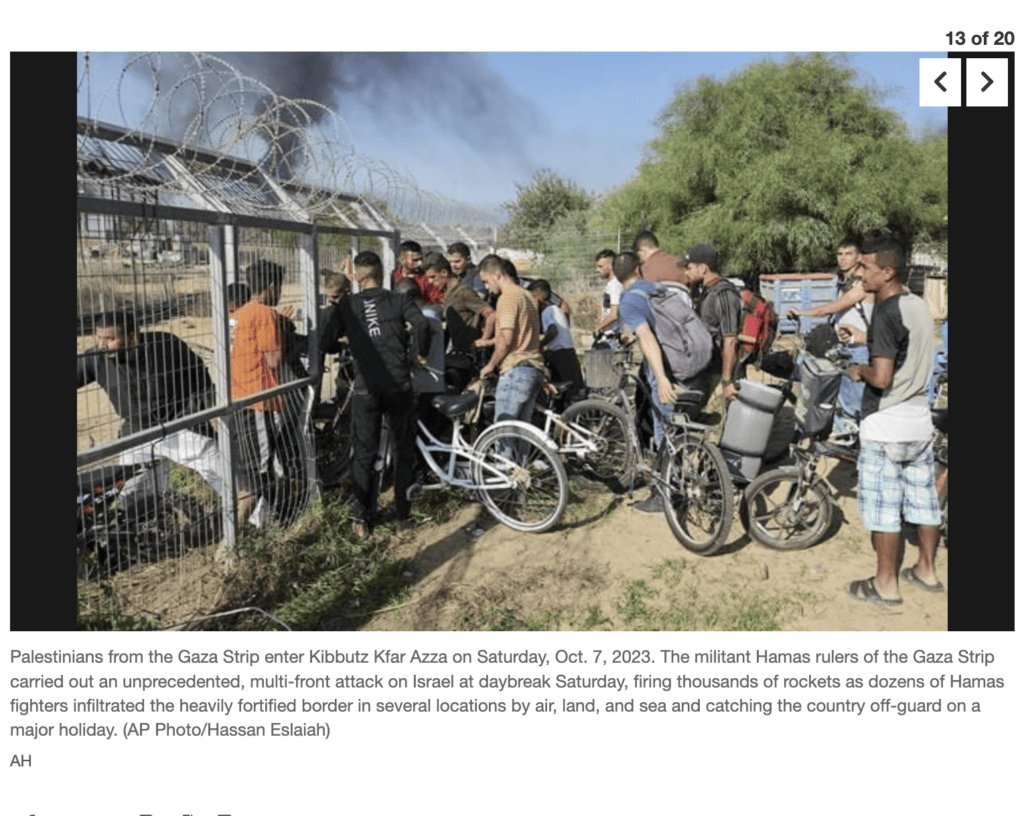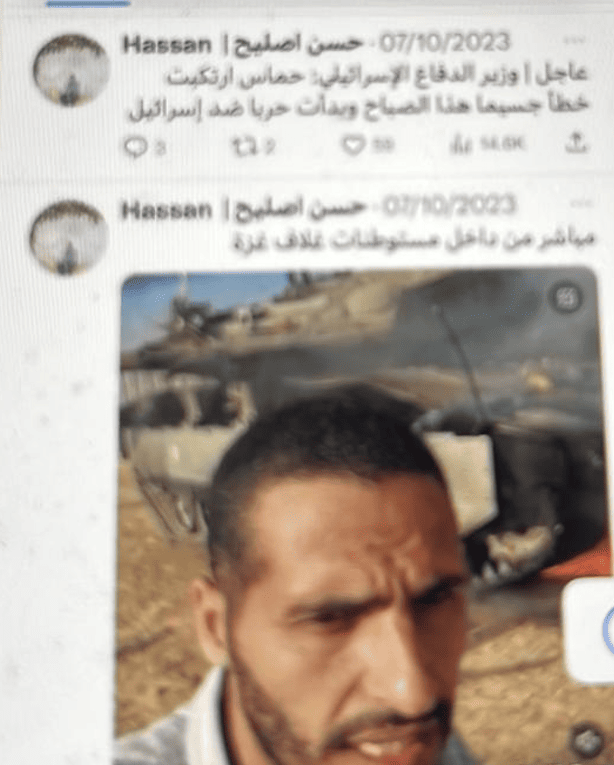Hassan Eslaia, a freelancer who also works for CNN, reporting near the burning Israeli tank
Gaza-based photojournalists employed by the world's leading news agencies, such as the Associated Press and Reuters, captured some of the atrocities committed by Hamas terrorists during their deadly incursion into southern Israel on October 7 as the events were unfolding. A media watchdog report published on Wednesday sheds light on significant ethical concerns surrounding their presence at the scene.
Read more:
The report, released by pro-Israeli media monitor HonestReporting, zooms in on several instances where cameramen working for prominent news outlets coincidentally arrived at the border during the early morning hours, raising questions about whether they had any foreknowledge of the attack.
"What were they doing there so early on what would ordinarily have been a quiet Saturday morning? Was it coordinated with Hamas? Did the respectable wire services, which published their photos, approve of their presence inside enemy territory, together with the terrorist infiltrators?" the report inquires.
"Did the photojournalists who freelance for other media, like CNN and The New York Times, notify these outlets? Judging from the pictures of lynching, kidnapping and storming of an Israeli kibbutz, it seems like the border has been breached not only physically, but also journalistically."
According to HonestReporting, four names appear on AP's photo credits from the Israel-Gaza border area on October 7: Hassan Eslaiah, Yousef Masoud, Ali Mahmud and Hatem Ali.
Eslaiah, a freelance photographer who also works for CNN, crossed into Israel, took photos of a burning Israeli tank, and then captured Palestinian infiltrators entering Kibbutz Kfar Azza.
HonestReporting presented screenshots of Eslaiah’s now-removed X posts in which he documented himself standing in front of the Israeli tank. He did not wear a press vest or a helmet, and the Arabic caption of his tweet read: “Live from inside the Gaza Strip settlements.
Masoud, who also works for The New York Times, was there as well. Ali Mahmud and Hatem Ali captured the abduction of Israelis into Gaza. According to HonestReporting, the credits of the photographers who were at the border were subsequently removed from some of the photos in AP's database.
The report points out that Reuters has published photos from Gazan photojournalists, Mohammed Fayq Abu Mostafa and Yasser Qudih, who also happened to be at the border when dozens of infiltrators rolled into Israel.
They both took pictures of a burning Israeli tank on the Israeli side of the border. Shockingly, Abu Mustafa also took photos of a lynch mob brutalizing the body of an Israeli soldier who was dragged out of the tank.
The report adds that while Reuters added a graphic warning to the photo caption, its editor featured the snap as one of its “Images of the Day” on their editorial database.
CNN said in response that it "decided to suspend all ties with Hassan Eslaiah". "We are aware of the article and photo concerning Hassan Eslaiah, a freelance photojournalist who has worked with a number of international and Israeli outlets. While we have not at this time found reason to doubt the journalistic accuracy of the work he has done for us, we have decided to suspend all ties with him."
AP says in response: "The Associated Press had no knowledge of the Oct. 7 attacks before they happened. The role of the AP is to gather information on breaking news events around the world, wherever they happen, even when those events are horrific and cause mass casualties. AP uses images taken by freelancers around the world, including in Gaza."
Reuters denied on Thursday in a statement that it had prior knowledge of the October 7 attack by Hamas on Israeli civilians and soldiers. "We are aware of a report by HonestReporting and accusations made against two freelance photographers who contributed to Reuters coverage of the Oct. 7 attack," Reuters said in a statement. "Reuters categorically denies that it had prior knowledge of the attack or that we embedded journalists with Hamas on Oct 7. Reuters acquired photographs from two Gaza-based freelance photographers who were at the border on the morning of Oct. 7, with whom it did not have a prior relationship. The photographs published by Reuters were taken two hours after Hamas fired rockets across southern Israel and more than 45 minutes after Israel said gunmen had crossed the border. Reuters staff journalists were not on the ground at the locations referred to in the HonestReporting article."
The New York Times rejected criticism after its photographer in Gaza was signaled out for filming the Hamas massacre on October 7. The paper said he was covering events as they unfolded as was his job. "The accusation that anyone at The New York Times had advance knowledge of the Hamas attacks or accompanied Hamas terrorists during the attacks is untrue and outrageous," they stated. "It is reckless to make such allegations, putting our journalists on the ground in Israel and Gaza at risk. The Times has extensively covered the Oct. 7 attacks and the war with fairness, impartiality, and an abiding understanding of the complexities of the conflict.
"The advocacy group Honest Reporting has made vague allegations about several freelance photojournalists working in Gaza, including Yousef Masoud. Though Yousef was not working for The Times on the day of the attack, he has since done important work for us. There is no evidence for Honest Reporting’s insinuations. Our review of his work shows that he was doing what photojournalists always do during major news events, documenting the tragedy as it unfolded."
First published: 00:17, 11.09.23



